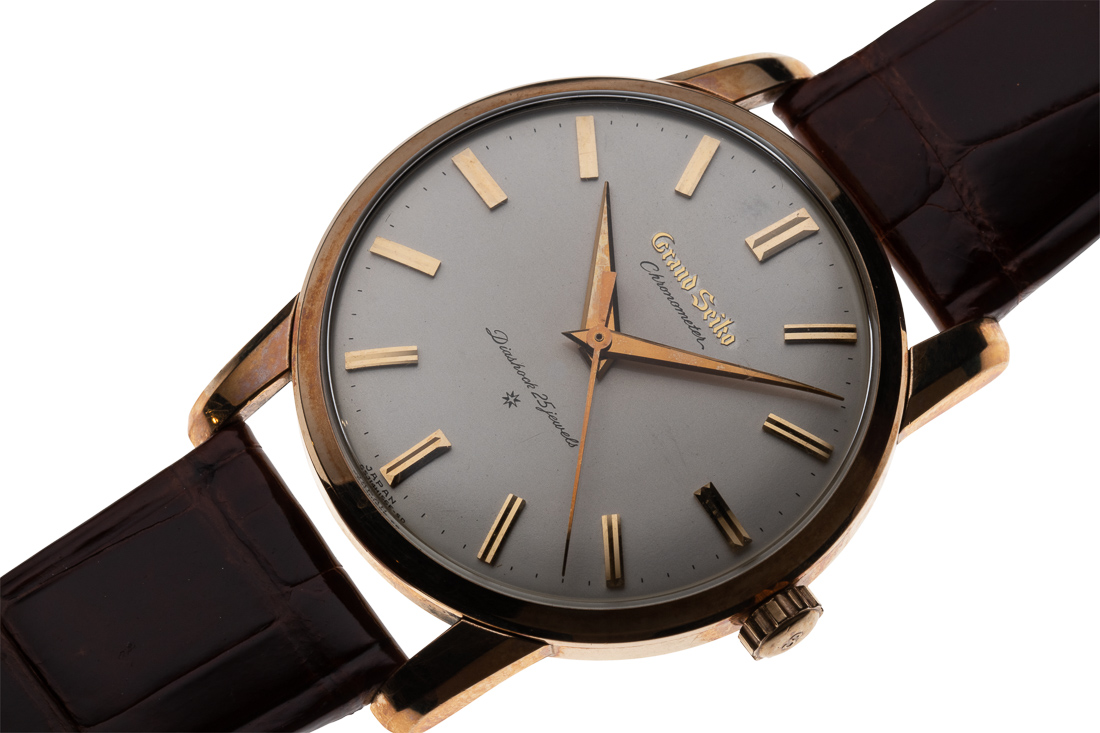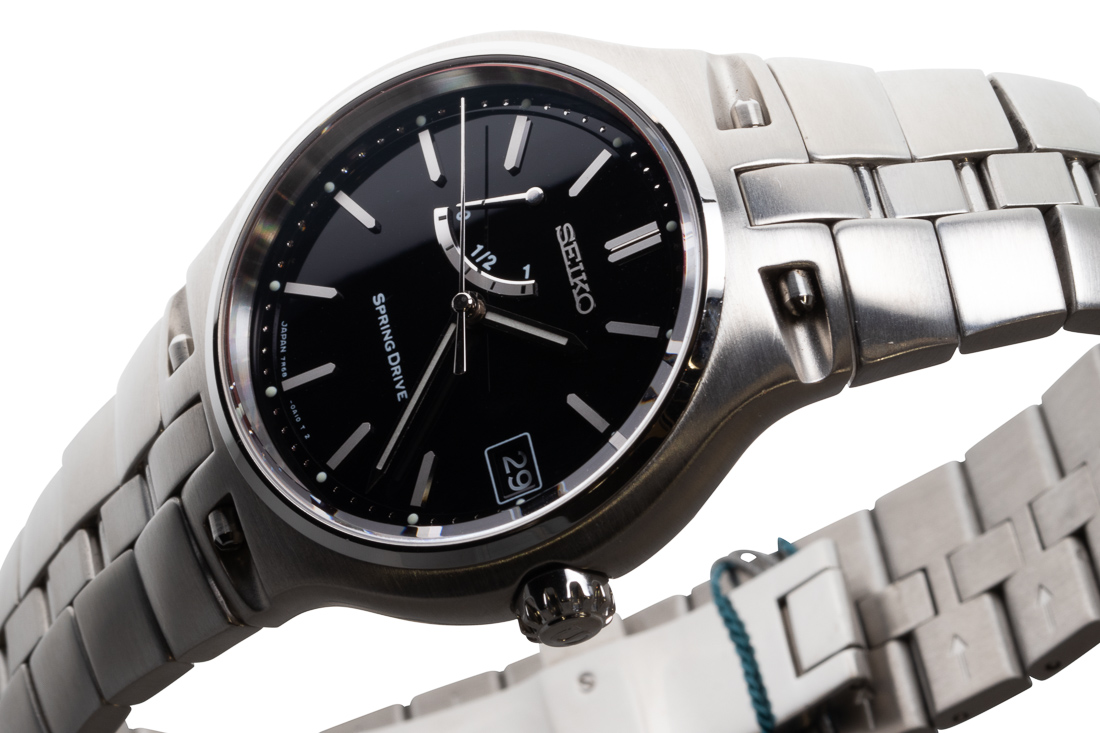The Seiko Museum in Tokyo carries an extensive collection of Seiko watches but also includes examples of time keepers from the dawn of time keeping. All of the time keepers below and more, can be seen first hand at the museum. Approximately 13,000 people have visited the museum in the passed 12 months, and each year the number of visitors has been increasing.
(Video’s and descriptions reproduced courtesy of the Museum)
The Incense clock
Edo Period (1603–1868)
Incense powder is spread over the surface of a maze-like wooden frame forming a patterned trail of incense. Time is calculated by tags added to the incense trail to estimate how much time has passed by. In equivalent Chinese systems different types of incense were used at each quadrant and the change of smell indicated a different period.
Incense Stick Clock
Edo Period (1603–1868)
A timer to manage the duration of a lesson in a temple school or a geisha's service, based on the number of incense sticks burned. The time taken to burn through a single stick varied little, so wages were calculated based on the number of sticks burned while engaged in service. The term Senkodai (fee for incense sticks) came to mean a tip. The price of one incense stick at the time was 100 hiki, or about 20,000 yen in today's value. If a geisha could serve an ozashiki party by herself for as long as it took to burn one incense stick (about 30 minutes), her competence was rated as near perfect. At that level of professionalism, she was said to have “gotten on her feet” ("ippon-dachi suru”).
The Sun Dial
The oldest of timepieces is most probably the sundial. Around 4000 B.C. the ancient Egyptians used a gnomon (projection rod), stuck vertically into the ground, to tell the approximate time of day by the position and length of the shadow it cast. This is thought to be the origin of the sundial.
Hourglasses
Hourglasses played an important role in maritime history, because they are not easily affected by the swaying of a ship or environmental changes such as temperature; and so for many centuries they were used to measure time during sea voyages. Both Columbus and Magellan are known to have taken several hourglasses with them on their voyages, and Magellan’s logbook even mentions him using as many as eighteen. Also, because they are silent timepieces, hourglasses were widely used on church pulpits. Hourglasses are said to have been introduced to Japan from Europe around the mid-16th century. Some theories date the invention of the hourglass as far back as the 8th century, but at the very latest its existence has been verified in frescos painted in the 1300s.
Lamp Clock
Philip II of Spain is said to have used the world’s first oil-lamp clock in the mid-1500s as an appliance for telling time at night. The glass oil pot was scaled to measure time based on the amount of remaining oil.
Paperweight Clock
Late Edo Period (1603–1868)
The clock is powered by a main spring and equipped with a balance wheel with a hairspring and verge escapement. Made by Noriyuki Ohno Yasaburo (a clockmaker stationed at the feudal Edo government's calendar station).
An abridged history of early Seiko using the part of the museums collection.
Seiko's history begins in 1881 when a 21 year old entrepreneur, Kintaro Hattori, opened a shop selling and repairing watches and clocks in central Tokyo. In 1892, he purchased a disused glass factory in Ishiwara-cho, Honjo-ward (the present Sumida city) and established the 'Seikosha' factory (in Japanese, “Seiko” means “exquisite”, “minute”, “precision” or “success” and “sha” means house.)
In 1895 Kintaro made his first pocket watch, the "Timekeeper".
In 1913 the "Laurel" was the first wristwatch to made in Japan.
In 1924 the first Seiko brand watch was produced .
In 1929 as Japan's railway network expanded, the National Railways appointed Seiko as Japan National Railway's official "Railway Watch".
Seikosha Naval Deck Watch
(1942)
A timepiece delivered at the request of Japan’s Imperial Navy for use on the decks of navy vessels. A type 19 ligne movement was housed in a larger case to increase the external dimensions to 24 ligne.
Marine Chronometer
(1942)
Marine chronometers were made for naval ships. Of this example around 500 pieces were manufactured at the request of the Imperial Japanese Navy. The maximum daily error recorded was 0.1 seconds. A timepiece of extreme precision was needed to accurately identify the location (longitude) of a ship. The marine chronometer achieves its high precision with a bimetallic balance wheel, helical hair spring, detent escapement and fusee.
Made in 1950. The first wrist watch model of Seiko with a center-second hand. Earlier Seiko watches were designed with a small second hand located at the 6 o'clock position.
In 1956 Marvel was Seiko’s most precise watch of its day, designed to compete with global watchmakers through a balance of high performance and simplicity in manufacturing and repair. The larger φ26 mm of movement represented a fundamental principles of watch design. This unrivaled watch won accuracy competitions in Japan, overtook a Swiss-made product, and took first ranking in a 1957 competition by the American Watchmakers-Clockmakers Institute (Japanese branch). This innovative product dispelled the stereotype of the “the cheap” Japanese timepiece.
Made in 1958 the Cronos was the first watch with a center second hand manufactured by Daini Seikosha. It was released as a thinner and higher-performance alternative to the "Marvel" with Suwa Seikosha in mind.
In 1959 Seiko produced the “Gyro Marvel” the first automatic watch with the companies proprietary “magic lever” automatic winding system.
Made in 1960 the “Gold Feather” was an ultra-thin dress watch designed with a best-in-class center second hand and housed in a gold case.
The Gold Feather was the world’s first Japanese watch equipped with a movement of less than 3mm thick.
Made in 1960, the first model from Grand Seiko. The best possible practical wristwatch, engineered for optimal performance of the three core functions of accuracy, reliability, and visibility. Every technique and skill available for accuracy was worked into the design, based on the masterpiece Crown, the successor of the Marvel. The Japan Society of Mechanical Engineers (JSME) certified this wristwatch as a “Mechanical Engineering Heritage” in 2014.
Made in 1961 the “King Seiko” was a high-end watch emblematic of Seiko along with the Grand Seiko.
King Seiko was modeled after the Chronos, a thinner and higher performance timepiece than the Marvel. Inspection standards equivalent to those for Swiss chronometers were applied.
Made in 1961 “Disney Time” was Japan’s first character watch sold in the domestic market through a license agreement with Disney.
In 1963 the Sportsmatic 5 was released. The Sportsmatic 5 came with a simple self-winding mechanism (magic lever), waterproof structure, easy-to-read 'day and date'-integrated window display, shockproof 'diashock' mechanism.
The small flush fitting integrated winding crown reinforced the strength of the overall design.
1963
Quartz Crystal Chronometer
The world’s first portable quartz clock, the 'Crystal Chronometer', used as the master clock for the longer track and field races at the 1964 Tokyo Olympics. The performance of this clock revolutionized the field of sports timing. It spurred the development of new technologies, including a temperature compensator and a small low-power synchronization motor fabricated by precision machining techniques for timepieces.
In 1964 Japan’s first wristwatch equipped with a stopwatch and column wheel, in the year of the Tokyo Olympic Games.
In 1965 the first Japan-made diver's watch, waterproof to a depth of 150 meters. The winding crown was designed with a double packing structure to withstand high water pressure. Designated for use by the 8th Japanese Antarctic Research Expedition.
Seiko Movement Presented at the Neuchâtel Observatory Competition 1967.
One of Seiko’s movements that achieved top results in the Geneve Observatory Competition in 1968.
Made in 1967 “Lord Marvel 36000” Japan’s first high-beat (10 beats: 36,000 beats per hour) greater accuracy watch.
The balance spring vibrates 10 beats per second when 5 to 6 beats were the prevailing rates.
Made in 1967 the Seiko “Business Bell” was The world’s first watch equipped with self-winding, waterproofing, calendar, and bell alarm mechanisms. User’s could easily set the alarm time by pulling the crown and adjusting the position of the arrow on the ring on the outer periphery of the dial.
The alarm sounds by striking a ring-like sound rod, which sounded like an actual bell.
Made in 1968 the 61GS was japan’s first self-winding 10-beat watch. The 10-beat movement improved the isochronism and achieved higher and more stable precision against position changes and external impact. Seiko’s original magic lever was adopted as the improved winding mechanism.
Made in 1969 the Grand Seiko 61GS V.F.A. The 10-beat “Very Fine Adjusted” watch pushed the precision of a mechanical watch to a monthly error within ±1 minute. The Grand Seiko V.F.A was deemed a worthy Seiko heritage and exhibited at TIME CAPSULE EXPO ’70 at the Japan World Tokyo National Industrial Exhibition held in the following year.
In 1969 the world’s first quartz watch, the Seiko Quartz Astron was introduced in Tokyo on December 25. It was accurate to within 5 seconds per month.
Made in 1973 King Seiko Automatic Hi-Beat Chronometer.
The case was sealed, the movement and dial came out through the dial side, requiring the glass to be removed first.
In 1973 the introduction of the world’s first six-digit LCD quartz watch cal. 0614.
The red button alluminated a small light behind the LCD display.
The Seiko 6139 Pogue – a watch worn in space for nearly 84 days by NASA pilot Colonel William Pogue on the Skylab 4 mission between 1973 and 1974.
Made in 1978 the Superior Twin Quartz was a twin-quartz watch made with two quartz oscillators to improve accuracy to an impressive ±5 seconds per year. The first oscillator meets accuracy standards and the second detects temperature changes.
in 1982 the world’s first watch designed with both a tuner and headphone jack for watching TV, also equipped with an FM radio, together with all of the standard watch functions such as alarm, chronograph, and calendar.
An ultra slim manual-winding dress watch made in the 1980’s.
In 1999 the introduction of Spring Drive, a spring-driven mechanical watch with quartz accuracy. The traditional escapement is replaced by a totally new regulator that delivers silent and smooth glide motion hands and accuracy of one second a day.
In 1999 Introduction of the Ultimate Kinetic Chronograph cal. 9T82. A kinetic watch was equipped with stopwatch.
2010 Seiko Spring Drive Spacewalk commemorative edition. The original watch, created in 2008, was designed specifically for a spacewalk. Both inside and outside the International Space Station, it performed flawlessly in space. This commemorative edition won the sports watch award of Grand Prix d'Horlogerie de Genève.
To learn more about the Seiko Museum
To learn more about Grand Seiko
To learn more about Seiko















